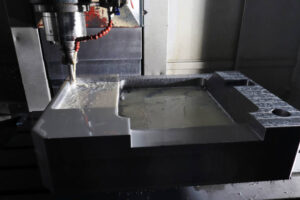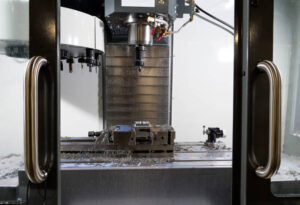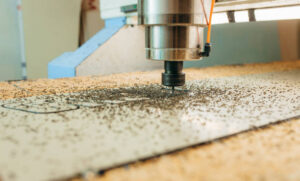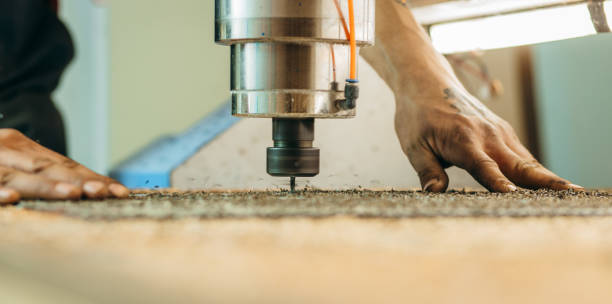How to Choose the Perfect CNC Spindle Motor for Your Woodworking Machine
Selecting the right CNC spindle motor is crucial for optimizing your woodworking machine’s performance. This comprehensive guide will walk you through the essential factors to consider when choosing a CNC spindle motor, helping you make an informed decision that will enhance your woodworking projects. Whether you’re a hobbyist or a professional, understanding the intricacies of CNC spindle motors will significantly impact the quality and efficiency of your work.
What Exactly is a CNC Spindle Motor and Why is it So Important?
A CNC spindle motor is the heart of any CNC machine, responsible for rotating the cutting tool at high speeds. It plays a crucial role in determining the precision, speed, and overall performance of your woodworking projects. But what makes it so essential?The spindle motor directly affects:
- Cutting accuracy
- Surface finish quality
- Material removal rate
- Tool life
Understanding these impacts will help you appreciate the importance of choosing the right CNC spindle motor for your specific needs.
What Are the Different Types of CNC Spindle Motors Available?
When it comes to CNC spindle motors, there are several types to choose from. Each has its own set of advantages and limitations. The main types include:
- AC Spindle Motors
- DC Spindle Motors
- Servo Motors
- Stepper Motors
Let’s delve into each type to understand their unique characteristics and applications in woodworking machines.

AC Spindle Motors
AC spindle motors are widely used in CNC routers due to their high power output and excellent speed control. They offer:
- High torque at low speeds
- Smooth operation
- Long lifespan
However, they can be more expensive than other options and may require a more complex control system.
DC Spindle Motors
DC spindle motors are known for their:
- Simple control systems
- Wide speed range
- High starting torque
These motors are often used in smaller CNC machines or for hobbyist applications. However, they may require more maintenance due to brush wear.
Servo Motors
Servo motors are prized for their:
- Precise position control
- High torque at low speeds
- Excellent response times
While they offer superior performance, servo motors can be more expensive and complex to implement.
Stepper Motors
Stepper motors are popular in smaller CNC machines because of their:
- Low cost
- Simple control
- Good low-speed torque
However, they may struggle with high-speed applications and can lose steps under heavy loads.
How Does Spindle Power Affect Your Woodworking Projects?
Spindle power is a critical factor in determining the capabilities of your CNC machine. But how exactly does it impact your woodworking projects?Higher spindle power allows for:
- Faster material removal rates
- Ability to cut harder materials
- Improved surface finish quality
However, more power isn’t always better. Consider the following:
“The ideal spindle power depends on the specific requirements of your projects. Excessive power can lead to wasted energy and increased tool wear.” – CNC Woodworking Expert
It’s essential to balance power with your typical workload and material types.
What RPM Range Should You Look for in a CNC Spindle Motor?
The RPM (Revolutions Per Minute) range of a CNC spindle motor is crucial for achieving optimal cutting performance. But what range should you aim for?Typical RPM ranges for woodworking CNC spindles include:
- 6,000 – 24,000 RPM for general-purpose work
- 24,000 – 40,000 RPM for high-speed operations
Consider the following factors when determining the ideal RPM range:
- Type of wood being cut
- Desired surface finish
- Tool diameter
- Feed rate
Remember, higher RPM doesn’t always mean better results. It’s about finding the sweet spot for your specific applications.

How Important is Torque in CNC Spindle Motor Selection?
Torque is often overlooked in favor of RPM, but it plays a crucial role in CNC spindle motor performance. But why is torque so important?High torque allows for:
- Cutting harder materials
- Maintaining speed under load
- Improved tool life
Consider the relationship between torque and RPM:
- Higher RPM generally means lower torque
- Lower RPM usually provides higher torque
Finding the right balance between torque and RPM is key to optimal performance in your woodworking projects.
What Cooling Systems are Available for CNC Spindle Motors?
Proper cooling is essential for maintaining the longevity and performance of your CNC spindle motor. But what cooling options are available?Common cooling systems include:
- Air-cooled spindles
- Water-cooled spindles
| Cooling Type | Advantages | Disadvantages |
|---|---|---|
| Air-cooled | Simple, low maintenance | Less efficient, noisier |
| Water-cooled | More efficient, quieter | More complex, higher initial cost |
Choosing the right cooling system depends on your specific needs and operating environment.
How Do You Determine the Right Spindle Size for Your CNC Router?
Spindle size is a critical factor in CNC router performance, but how do you choose the right size for your needs?Consider the following factors:
- Workpiece size and material
- Desired cutting depth
- Machine frame rigidity
- Power requirements
Remember, bigger isn’t always better. A properly sized spindle will provide optimal performance without unnecessary cost or complexity.
What Maintenance is Required for CNC Spindle Motors?
Regular maintenance is crucial for ensuring the longevity and performance of your CNC spindle motor. But what does proper maintenance entail?Key maintenance tasks include:
- Regular cleaning
- Lubrication checks
- Bearing inspections
- Vibration monitoring
Implementing a robust maintenance schedule can significantly extend the life of your spindle motor and prevent costly downtime.
How Do You Troubleshoot Common CNC Spindle Motor Issues?
Even with proper maintenance, issues can arise with CNC spindle motors. Being able to troubleshoot common problems can save time and money. What are some common issues and their solutions?
- Excessive vibration
- Check for loose mounting bolts
- Inspect for worn bearings
- Ensure proper tool balance
- Overheating
- Check cooling system functionality
- Ensure proper lubrication
- Verify power supply settings
- Loss of accuracy
- Check for worn bearings
- Inspect for shaft runout
- Verify control system settings
Being familiar with these common issues and their solutions can help you quickly address problems and minimize downtime.

What Future Trends Can We Expect in CNC Spindle Motor Technology?
As technology continues to advance, what can we expect to see in the future of CNC spindle motors?Emerging trends include:
- Integration of smart sensors for predictive maintenance
- Development of more energy-efficient motors
- Advancements in high-speed spindle technology
Staying informed about these trends can help you make forward-thinking decisions when selecting a CNC spindle motor for your woodworking machine.In conclusion, choosing the right CNC spindle motor is a critical decision that can significantly impact the performance and capabilities of your woodworking machine. By considering factors such as power, RPM, torque, and cooling systems, you can select a spindle motor that perfectly suits your needs.Key points to remember:
- Balance power, RPM, and torque based on your specific requirements
- Consider the type of projects and materials you’ll be working with
- Don’t overlook the importance of proper cooling and maintenance
- Stay informed about emerging trends in CNC spindle motor technology
By keeping these factors in mind, you’ll be well-equipped to choose the perfect CNC spindle motor for your woodworking machine, ensuring optimal performance and quality in all your projects.
- RicoCNC has a team of professionals who have been engaged in the design, production, sales, and maintenance of electro spindles for many years. Our company accepts the purchase of various types of CNC spindles.
water-cooled CNC spindle motors
Edge banding machine spindle motors.
- If you need any CNC spindle, please contact us.

